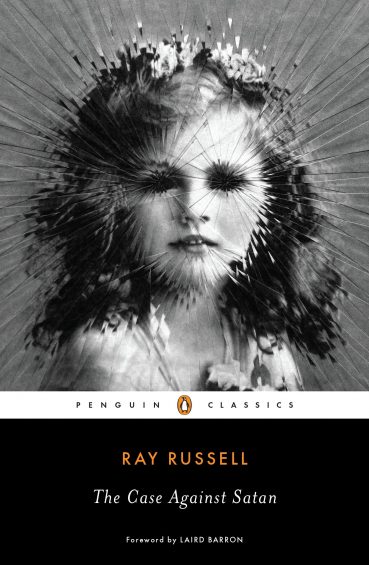 By RAY RUSSELL (Penguin; 1962/2015)
By RAY RUSSELL (Penguin; 1962/2015)
An early sixties horror novel that’s been MIA for over forty years, THE CASE AGAINST SATAN by Ray Russell is one of the most important reprints of 2015. In the development of modern horror tropes this novel is as important in its own way as more celebrated classics like I AM LEGEND, THE HAUNTING OF HILL HOUSE, ROSEMARY’S BABY and a certain other highly influential novel (and movie) that came along many years after this one, and shared many plot points.
THE CASE AGAINST SATAN centers on 16 year old Susan Garth, whose acting out goes beyond the bounds of traditional adolescent misbehavior. She’s being raised by her father, her mother having died (under suspicious circumstances) years earlier. Mr. Garth is inspired to seek out the help of the Catholic church in curbing his daughter’s erratic behavior. As Susan’s naughtiness grows increasingly severe—she literally runs from churches and makes sexual advances to a priest—it’s deduced that she’s possessed by Satan, and an exorcism is performed by Bishop Cummings and Father Gregory Sargent, a hipper-than-average holy man with some decidedly unorthodox ideas about sex and faith.
It may seem hard to believe, but this novel was apparently quite the envelope-pusher in its day. The author even includes a nonfiction afterward in which he all-but apologizes for content that some may find “gratuitously lurid.” These days it seems quite restrained, and even refined, particularly when contrasted with its most famous offshoot THE EXORCIST. You’ll find no public urination, crucifix masturbation or head spinning in these pages, as Ray Russell’s main concern was in contrasting the medieval-oriented horror of satanic possession with more modern, human-based evils like murder and incest, both of which come to play a large part in THE CASE AGAINST SATAN’S unfolding narrative.
Another way in which this novel differs from THE EXORCIST is its refusal to ever confirm whether Susan Garth is truly possessed. Her behavior, as one of the protagonists makes clear toward the end of the book, could well be the product of a disturbed psyche rather than the influence of the Big D. This may seem like a cop-out, particularly in today’s more-is-better horror fiction mode, but I say such indecision is emblematic of the author’s intelligence, which recognizes that when pondering the Big Questions (i.e. ones involving faith and divinity) no easy answers are forthcoming.
